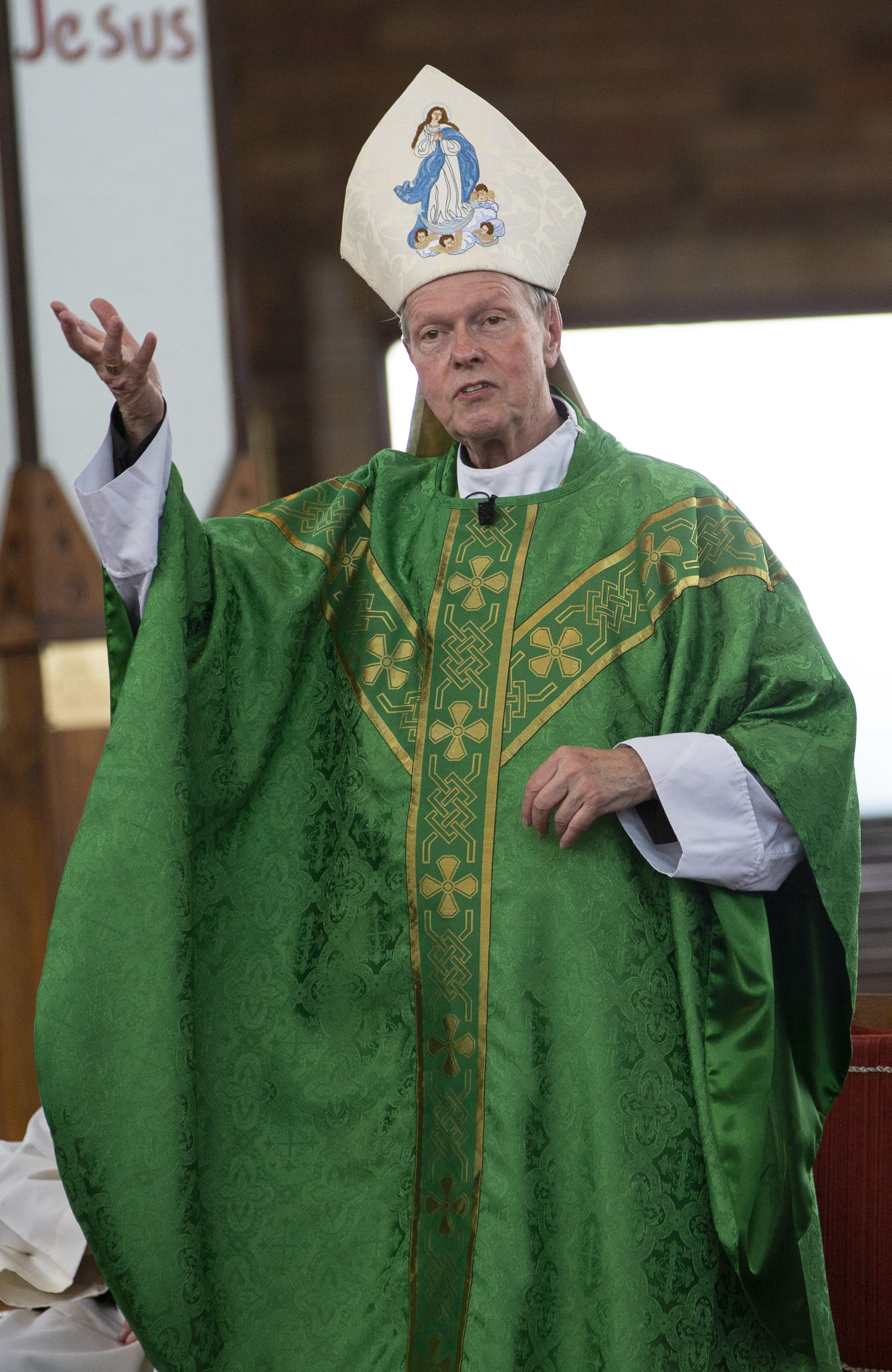March 23, 2021 at 4:54 p.m.
This weekend we once again celebrate Palm Sunday, or, to give it the official title “Palm Sunday of the Passion of the Lord.” The liturgy and the readings are, of course, very rich and deeply moving. We have, for example, two Gospel readings (both from Saint Mark who is our guide for this Year B of the three-year cycle). The Gospel at the beginning of Mass (Mark 11:1-10) recounts Jesus’ entrance to Jerusalem and the enthusiasm of the crowds who cry out “hosanna to the Son of David.” Later, the long Gospel account of Jesus’ passion and crucifixion from the Gospel of St. Mark is read (Mark 14:1-15:47).
Both Gospels, all the readings and indeed the whole liturgy invite us not to simply be passive spectators, or just to listen in on these events that bring us salvation; but rather, as Jesus’ disciples, to enter fully and completely into this “holy drama.” Perhaps that is why we participate in the Masses and liturgies of Holy Week in a special and more dramatic way than usual: carrying palms or being the “crowd” in the reading of the Gospel. We are to be drawn into these life-changing (and world-changing) events. The introduction at the beginning of Mass this weekend puts it so well:
… Therefore, with all faith and devotion, let us commemorate the Lord’s entry into the city for our salvation, following in His footsteps, so that, being made by His grace partakers of the Cross, we may have a share also in His resurrection and in His life.
Our First Reading (Isaiah 50:4-7) is one of the four “canticles of the suffering servant of God.” We will hear the other canticles during Holy Week, culminating on Good Friday. This suffering servant is, for Christians, a vision or prophecy about Jesus. He is that suffering servant who listens to God’s Word and obeys it, even to mockery, insult and death. Our Psalm (Psalm 22:8-9, 17-18, 19-20, 23-24) is also rather like a prophecy about Jesus and his suffering and there is that poignant line that Jesus speaks as he hangs upon the cross “my God, why have you abandoned me?” Our Second Reading is the rather enigmatic Philippians Hymn (Philippians 2:6-11). Some scholars think that this passage was actually some form of hymn used in the very early Christian liturgy (an awesome thought!). It narrates a cycle or journey: Jesus as God who empties himself to become a slave, who then accepts death on a cross, only to be raised and to be given the name above every other name.
Then we hear (and also enter into!) “The Passion of our Lord Jesus Christ according to Mark.” As mentioned, this year we have Mark’s account (as part of the three-year cycle of Matthew, Mark and Luke). There are many things in common with all three Gospel writers, as they tell us about Jesus’ suffering and death; but each of them also wants to bring out particular truths and reflections to help us. So, what, in particular, does Mark wish to share with us?
First of all, and is so often the case, St. Mark gives us a very stark and almost grim account of Jesus’ Passion. Mark does not sugar coat the pill. He wants us to see and to feel what Jesus endured for us and for our salvation. In a similar vein, Mark stresses the horror that Jesus sees concerning the evil that is to come. As Mark states, Jesus is distressed and greatly troubled. It is, what we might call, the awful reality of what can happen when evil abounds. Even Jesus’ disciples abandon him. Then, as a counterpoint, Mark also wants to show us the revolution and newness that is to come through our Lord’s Passion, death and resurrection. It is in Mark that we read how the veil of the Temple is torn in two. This is a symbol that the love and presence of God is now fully revealed and that there is a new Temple and a new Covenant in and through our Lord.
As we enter into this holy drama of Holy Week, may you have a truly wonderful and holy Holy Week!
- Linger in contemplation at the manger with the Holy Family
- Across the world, Christmas shines even — and especially — in the darkest places
- Full text: Pope Leo XIV’s ‘urbi at orbi’ message
- Full text: Pope Leo’s homily on Christmas Day
- Open your hearts to baby Jesus and one another, pope says on Christmas
- Scripture series by popular Catholic speaker offers deep dive into the person of Jesus
- To turn away others is to turn away God, pope says on Christmas Eve
- Arriving at the manger with Caryll Houselander
- Barrett discusses Dobbs decision, Roe’s ‘flawed’ reasoning, life at the court, her faith
- Bishop: To welcome immigrants is to follow God’s ‘divine command’ to care for the stranger








Comments:
You must login to comment.